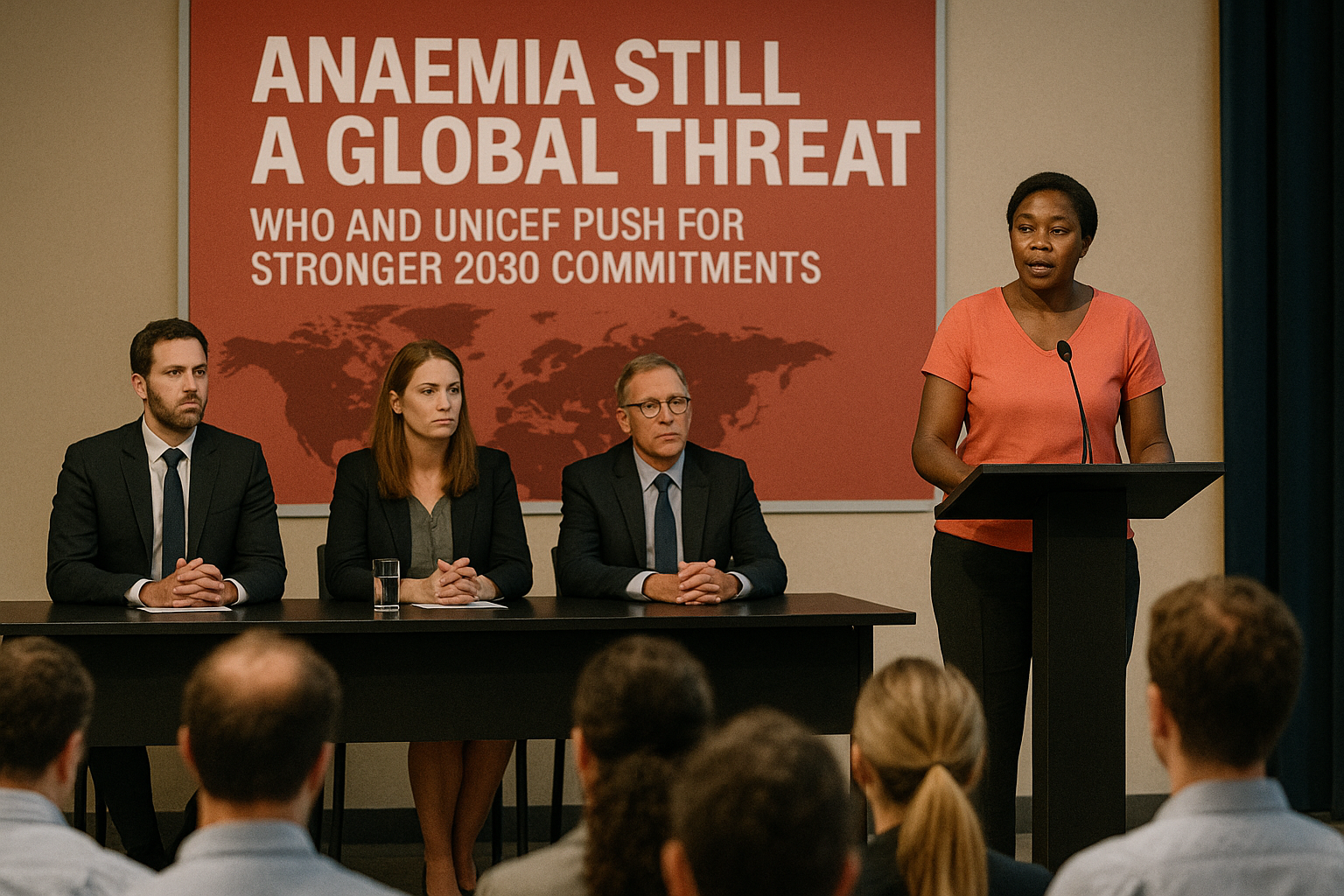Anaemia Still a Global Threat: WHO and UNICEF Push for Stronger 2030 Commitments
The Global Nutrition Targets 2030: Anaemia Brief by WHO and UNICEF warns that global anaemia rates among women have stagnated at around 30%, threatening health, productivity, and gender equality. It calls for urgent, multisectoral action, spanning nutrition, healthcare, and social policy to halve anaemia by 2030 through better diets, supplementation, and disease control.

The Global Nutrition Targets 2030: Anaemia Brief, jointly produced by the World Health Organization (WHO) and UNICEF with input from the Food and Nutrition Research Institute (FNRI) in the Philippines, the Ghana Health Service, and Nutrition International, presents an urgent assessment of anaemia's global impact. Affecting an estimated 605 million women aged 15–49, anaemia is not only a medical concern but a major barrier to economic growth and gender equality. Defined by low haemoglobin concentration, it weakens energy and productivity while sharply increasing women's risks of preeclampsia, depression, and maternal death. Infants of anaemic mothers face low birth weight, delayed growth, or stillbirth. The economic loss is immense, about US$161 billion annually for children and US$113 billion for women and adolescent girls, roughly 0.3% of global income. In Nigeria, losses reach 1.7% of its GNI, yet donor funding for anaemia reduction fell 7% from 2015 to 2022, revealing a dangerous lack of urgency.
The Many Faces of Anaemia
Anaemia's causes are diverse and intertwined. While iron deficiency explains most cases, deficiencies in folate, vitamin B12, vitamin A, and riboflavin also impair red blood cell formation. Infections such as malaria, HIV, and hookworm hinder absorption or cause blood loss, while chronic diseases like cancer, kidney failure, and diabetes trigger inflammation that suppresses haemoglobin production. Inherited disorders such as sickle cell disease and thalassaemia also play a role, particularly in malaria-endemic regions. Heavy menstrual bleeding and postpartum haemorrhage are major causes of maternal anaemia, with severe cases doubling the risk of death. WHO defines anaemia as haemoglobin below 120 g/L for non-pregnant women and 110 g/L for pregnant women, adjusted for smoking and altitude.
Global Stagnation and National Successes
Despite global awareness, the fight against anaemia has stalled. Prevalence among women of reproductive age rose from 27.6% in 2012 to 30.7% in 2023, putting the world far off the 2030 target to halve the rate. The African and South-East Asian regions are the hardest hit. Yet, countries like the Philippines and Ghana have shown measurable progress. The Philippines reduced anaemia among women from 22% in 2008 to 12% in 2023, through poverty reduction, women's education, conditional cash transfers, and better antenatal care supported by the Philippine Plan of Action for Nutrition (2017–2022). Ghana's rate dropped from 41.3% to 36% between 2012 and 2023, driven by food fortification, deworming, malaria control, and nutrition education. Its Reproductive, Maternal, Newborn, Child and Adolescent Health and Nutrition Strategic Plan (2020–2025) promoted iron-folic acid use, diversified diets, and collaboration between the health and agriculture sectors.
Framework for Action
Since 2012, WHO and UNICEF have issued frameworks to guide national responses, including the Comprehensive Implementation Plan on Maternal, Infant, and Young Child Nutrition and the Accelerating Anaemia Reduction Framework (2023). These call for tackling both direct causes, micronutrient deficiencies, infections, and blood loss, and underlying inequities like poverty and gender gaps. The Anaemia Action Alliance, co-led by WHO and UNICEF, fosters collaboration, while USAID's Multisectoral Nutrition Strategy (2014–2025) strengthens task forces and policy integration. WHO's 2030 framework emphasizes four pillars: identifying causes, prioritizing interventions, improving delivery systems, and expanding research and innovation. The ultimate goal is to enhance micronutrient status, prevent infection, manage gynaecological conditions, and treat inherited blood disorders through an integrated, cross-sector approach.
Interventions and Targets for 2030
The report highlights key actions: routine anaemia screening for women and children, iron and folic acid supplementation, staple food fortification, and infection control through malaria prevention, sanitation, and deworming. Managing menstrual and postpartum blood loss and promoting family planning are essential, as is screening for inherited disorders. Success demands coordination across health, agriculture, education, water, and social protection sectors. To track progress, WHO sets two operational 2030 goals: increasing the share of pregnant women taking at least 90 iron supplement doses by 50% (from 36.4%) and improving dietary diversity among women by 30% (from 65.8%). Achieving these will require sustained investment, behaviour change, and better monitoring systems.
A Renewed Global Commitment
The brief concludes that anaemia remains a marker of inequality and systemic neglect, particularly for women. Yet, experiences from the Philippines and Ghana prove that progress is possible with political will, multisectoral planning, and community engagement. WHO and UNICEF call for stronger investment, unified data systems, and equitable implementation to meet the 2030 target. Ending anaemia, they argue, is essential not only for better health but also for empowering women, strengthening economies, and advancing sustainable development.
- FIRST PUBLISHED IN:
- Devdiscourse
ALSO READ
-
Nutrition with Caution: WHO’s New Rules on Fortifying Oils for Public Health
-
WHO Uganda’s ‘Men Talk’ Series Redefines Masculinity and Mental Wellness
-
Remembering Piyush Pandey: The Ad Maestro Who Redefined Indian Advertising
-
Piyush Pandey: The Maverick Who Reshaped Indian Advertising
-
Cipla Health Champions WHO-Approved Rehydration with #AsliORS









